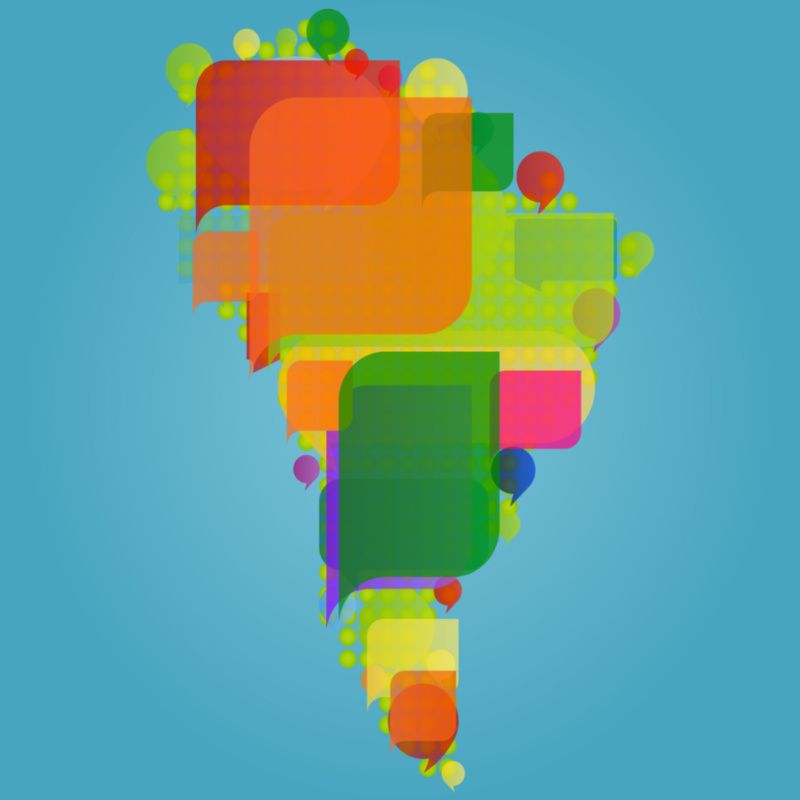Why Latin America Matters to the U.S.
For decades Latin America has been on the periphery of U.S. foreign policy thinking, as if we could seal ourselves off from everything south of the border by building a wall. But the region is experiencing major transformations with repercussions for the entire American continent, from climate change and a growing wealth gap, to the ‘normalization of cartels,’ and a leftward leaning political shift.
Meanwhile, China, Iran and other players are deepening their strategic stakes in the region.

As Biden hosted a summit of Latin American leaders (minus those of several key countries including Mexico, Cuba, Honduras, Venezuela), speakers – Christine Folch, Assistant Professor of Cultural Anthropology and Environmental Science and Policy, Duke University; Ted Lewis, Co-Director, Global Exchange; Ariel Ruiz Soto, Migration Policy Institute; and Manuel Ortiz Escámez, Photojournalist, Publisher, Peninsula 360 – assessed what the U.S. stakes are in a changing Latin America.
Ariel Ruiz Soto, a policy analyst with Migration Policy Institute based in Washington, D.C., said in his remarks, “We have migrants that are transiting to through central parts of Central America to try to come to the United States. That’s one group.
“We also have returnees who are being repatriated from the United States and Mexico, in some cases, to other parts of the region, and Haiti, Cuba, and others.
“We also have internal displacement and immigrants who are moving two countries through legal means for job opportunities, for family, or for other reasons, that that come into play here.
“What we’ve seen is that the composition the flow is changing in the region again. For the last several years, Central American migrants have been a significant part of the population that’s moving through the region and coming to the United States in mix or through Mexico and into the United States. There’s also a big important flow of migrants from Nicaragua to Costa Rica, and there’s also an internal flow incentive in South America that’s also happening, including some Haitian migrants that have been somewhat settled or temporarily settled in Chile, in Brazil, and Ecuador, and other places, and now are beginning to transit to the country.
“We have Cubans and Venezuelans that have been long part of this migration in Latin America and it’s important for us to think about that.
“In the sum of the Americas, what we see coming together is an opportunity to increase better management of migration to different policy settings and these are labeled into three different pillars – the first pillar is creating stability and assistance for communities that are receiving and working with migrants. Two – increase profession providing legal pathways and protection for migrants directly, and this protection doesn’t necessarily have to be refugee determination. It could be a combination of statuses temporary and or permanent for migrants as well. Three – Making border management more humane,” said Ruiz.
“I think that so many of the Americas is a wake-up call for the United States and other countries in North America to reorganize and rethink their strategy involving the Latin American countries that at least in terms of migration are the most prevalent and important,” concluded Ruiz.
“In the United States, we get almost two-thirds of the electricity, that we consume, by burning fossil fuels. We get 20 percent from nuclear, and 20 percent renewables, and this majority reliance on fossil fuels for electricity generation is common worldwide.
“Europe, Asia, Africa, the Middle East, Oceania get two-thirds, three-quarters, almost 100 percent of their electricity by burning fossil fuels. There is one exception to this in the whole world. There’s one region that does not fit this pattern of majority reliance on fossil fuels for electricity generation and that is Latin America.
“In Latin America, more than two-thirds of the electricity generated comes from renewable energy resources. If we want to think about a post-fossil fuel world in terms of our economics and politics, the good, the bad, and the ugly, Latin America has something to show.
“This also raises interesting opportunities for engagement in the United States vis-a-vis Latin America, because rather than building a wall to address issues like migration, there might be a way to think about building wells that draw people together rather than walls that keep people separate,” said Folch.
“As the U.S. is shifting to lithium-ion batteries, not just the traditional stuff of copper and fossil fuels, that’s a red flag because there’s an incredible amount of attention paid to the region by political and economic interests. The narrative in the United States is so focused on Latinos, Latinas, Latinx communities inside the United States or climate refugees from the region, I think that a lot of attention is already being paid and it’d be interesting to see more attention because there are massive extractive and infrastructural projects happening that have incredible impacts in terms of geo, in terms of diversity, and of flora and fauna,” said Lewis.
“What is new in Latin America is the emergence of social movements. Most important is the alliance between these movements. Alliance of some indigenous movements that for decades have been fighting isolated in their communities. Perhaps they will start communication with some other communities, even with indigenous here in the United States,” said Ortiz.


